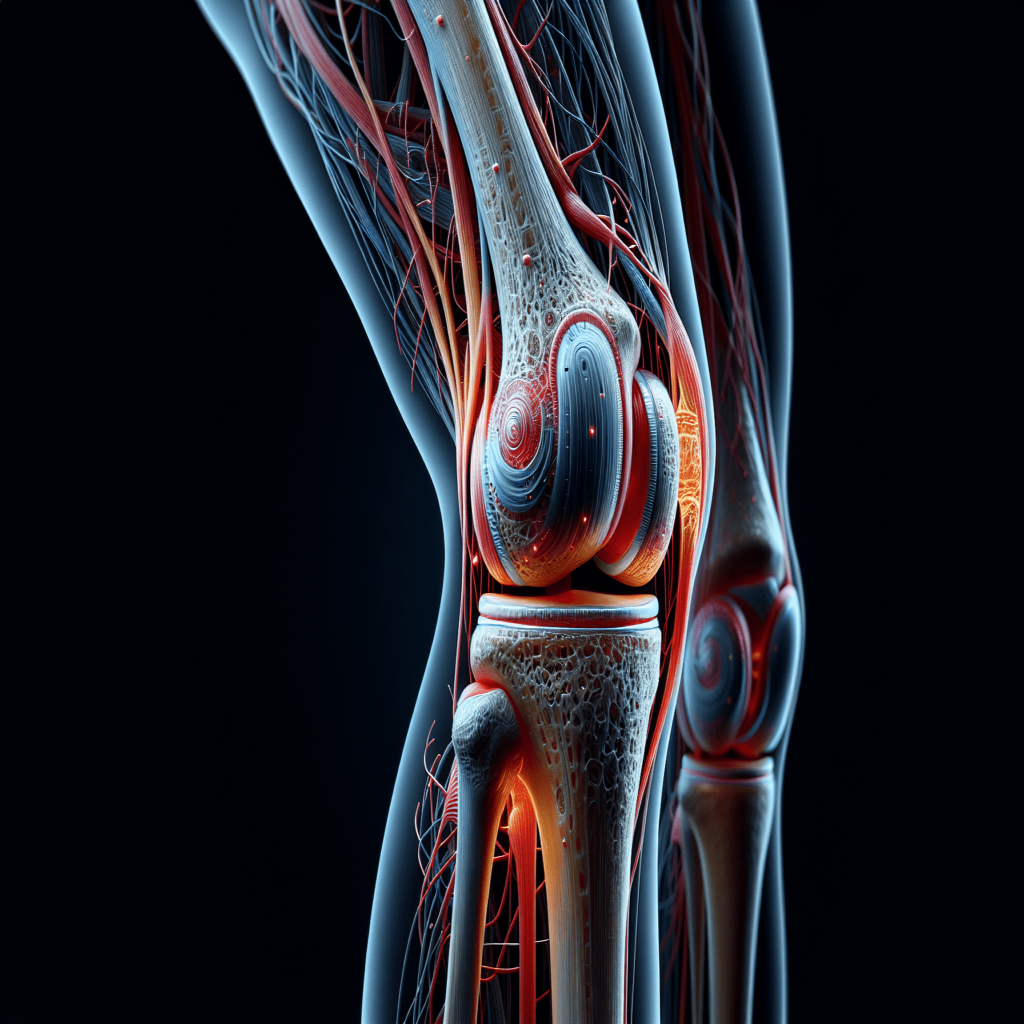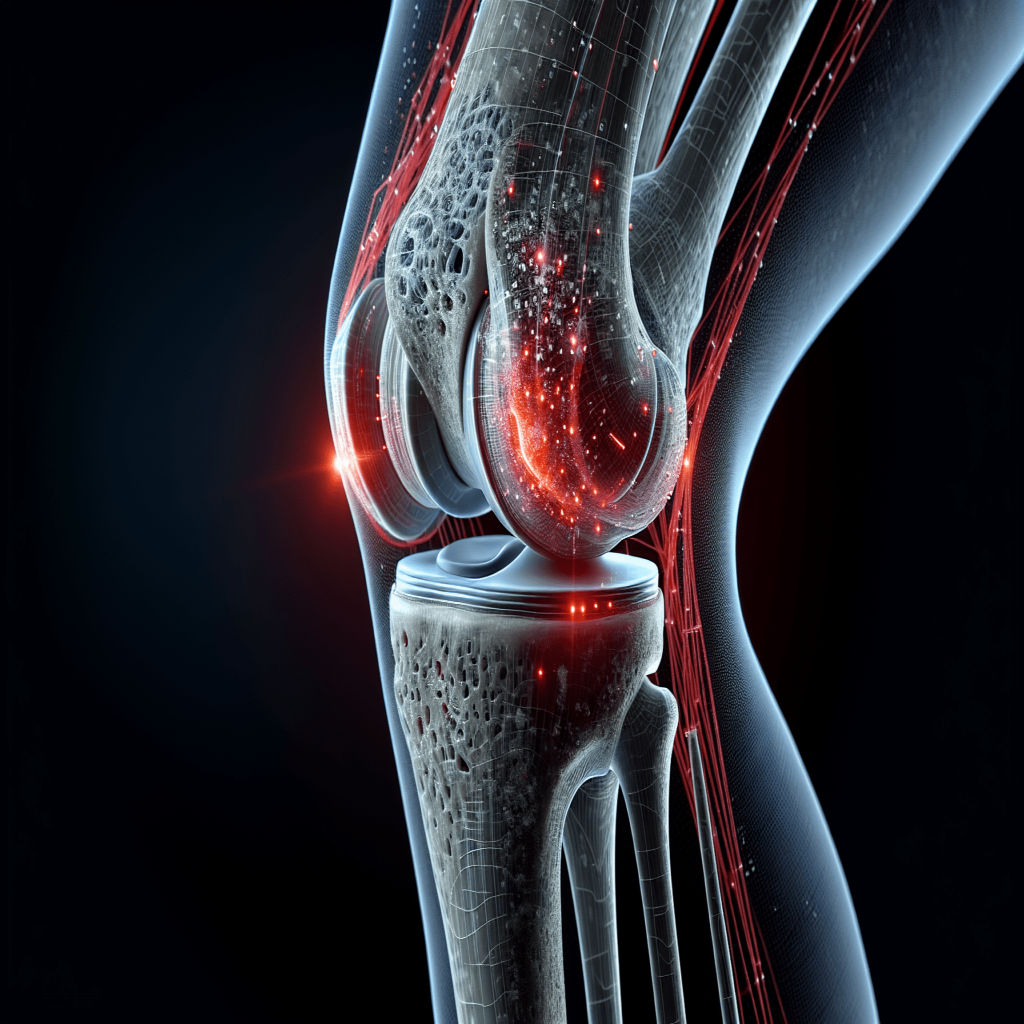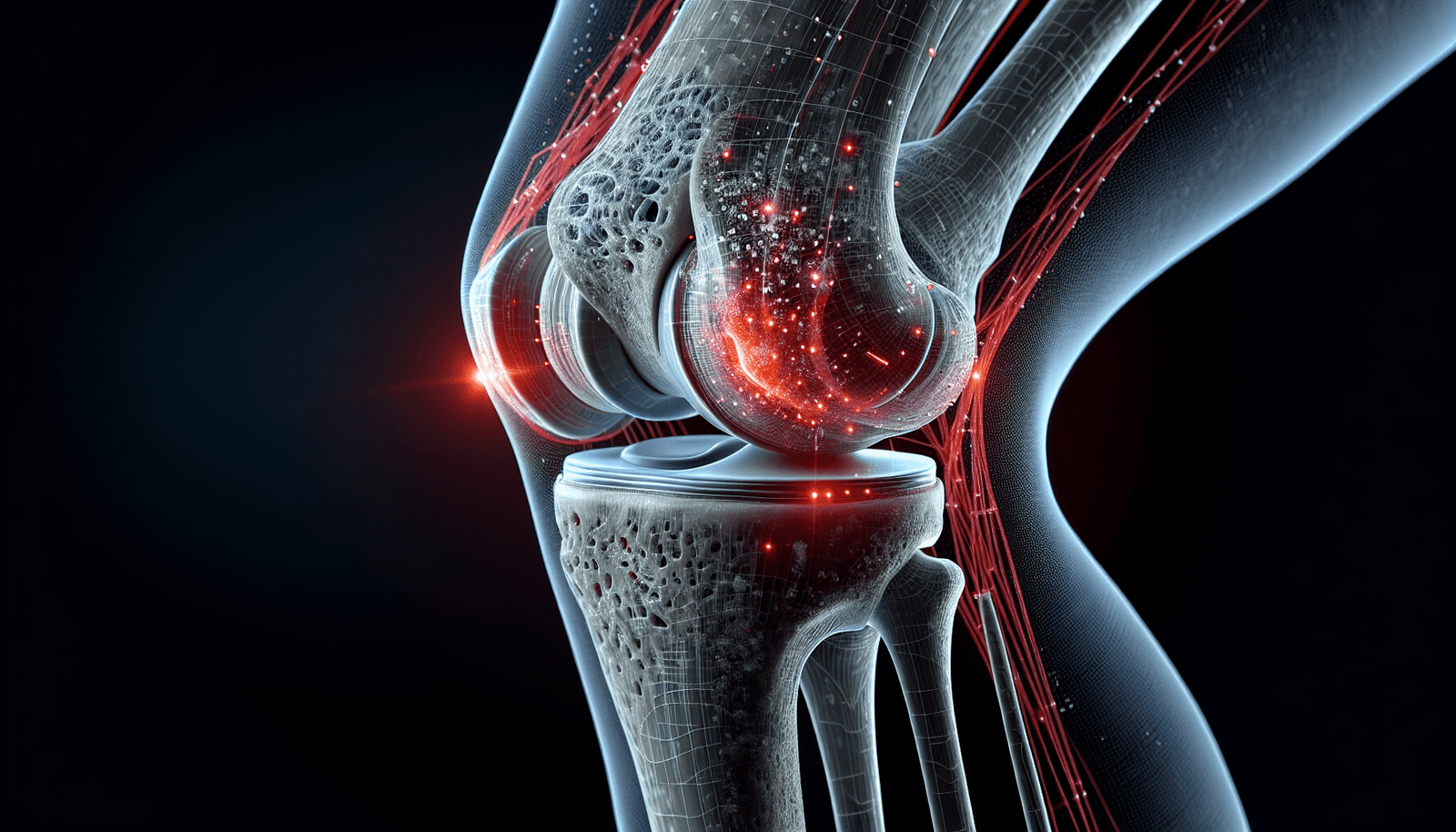You’re experiencing the discomfort of left knee joint pain and you’re looking for answers. In this article, we’ll explore the diagnosis and treatment options for this common ailment. Whether you’re an avid athlete, a busy office worker, or simply someone who wants to find relief, you’ve come to the right place. Let’s dive into the world of left knee joint pain and discover the solutions that will help you get back on your feet and living life to the fullest.

Introduction
Left knee joint pain can significantly impact your daily activities and quality of life. It is important to understand the causes, symptoms, and available treatment options for this condition. By recognizing the early signs and seeking prompt medical attention, you can actively manage the pain and prevent further complications.
Overview of Left Knee Joint Pain
The left knee joint is a complex structure that allows for movements such as walking, running, and bending. It comprises bones, ligaments, tendons, and cartilage, all of which work together to provide stability and support. When this joint is affected by pain, it can hinder your mobility and overall functionality.
Importance of Early Diagnosis and Treatment
Early diagnosis and treatment are crucial for left knee joint pain. Identifying the underlying cause and initiating appropriate measures can prevent the condition from worsening and minimize discomfort. Timely intervention can also help mitigate potential complications and improve long-term outcomes.
Causes
Understanding the causes of left knee joint pain can help pinpoint the root of the problem and guide appropriate treatment strategies.
Injury or Trauma
Injuries and trauma, such as fractures, ligament tears, or dislocations, can cause immediate pain in the left knee joint. These can result from sports injuries, accidents, or falls. Prompt medical attention is necessary to assess the severity of the injury and implement the appropriate treatment plan.
Arthritis
Arthritis is a common cause of chronic knee joint pain. Osteoarthritis, rheumatoid arthritis, and post-traumatic arthritis can all affect the left knee joint and lead to discomfort, swelling, and stiffness. Treatment options can focus on managing pain, reducing inflammation, and preserving joint function.
Overuse or Repetitive Strain
Frequent use, repetitive movements, or overexertion can strain the left knee joint, leading to pain and discomfort. Activities such as running, jumping, or squatting can contribute to the development of overuse injuries, including patellofemoral syndrome or iliotibial band syndrome. Rest, physical therapy, and modifications to activity levels can aid in recovery.
Infections
Infections can cause knee joint pain, although they are less common. Septic arthritis, a bacterial or fungal infection in the joint, may cause redness, warmth, swelling, and sharp pain. Immediate medical attention is necessary to diagnose and treat the infection, as it can lead to significant joint damage if left untreated.
Other Underlying Medical Conditions
Certain medical conditions, such as gout, Lupus, or tendonitis, can contribute to left knee joint pain. It is important to consult with a healthcare professional for a thorough evaluation and appropriate management of these conditions.
Symptoms
Recognizing the symptoms associated with left knee joint pain can help you communicate effectively with your healthcare provider and guide the treatment process.
Pain
Pain in the left knee joint can range from mild discomfort to severe and constant pain. It may be sharp, throbbing, or achy. The intensity and duration of pain can vary depending on the underlying cause.
Swelling
Swelling, also known as edema, is a common symptom of knee joint pain. It can occur due to inflammation, fluid accumulation, or injury. Swelling may make it difficult to bend or straighten the knee fully and may cause a feeling of tightness.
Stiffness
Stiffness in the left knee joint can make it challenging to initiate movement or bend the knee smoothly. It may also cause a sensation of tightness or rigidity. Stiffness can be particularly noticeable after long periods of inactivity, such as upon waking in the morning.
Limited Range of Motion
Left knee joint pain can restrict the range of motion in your knee. You may find it difficult to fully extend or flex your knee joint. This limitation in movement can affect your ability to perform daily activities such as walking or climbing stairs.
Redness or Warmth
In certain cases, the left knee joint may appear red or feel warm to the touch. These symptoms can indicate inflammation or infection within the joint. It is essential to seek medical attention promptly if you notice these signs.

Diagnosis
Accurate diagnosis is crucial for determining the cause of left knee joint pain and formulating an effective treatment plan. Medical professionals employ various methods to evaluate the condition comprehensively.
Medical History Evaluation
During the medical history evaluation, your healthcare provider will ask you about your symptoms, the duration and intensity of pain, any previous injuries, and your medical history. Providing detailed information will assist in identifying potential causes and determining appropriate diagnostic tests.
Physical Examination
A thorough physical examination of the knee joint will help assess the range of motion, stability, and presence of any swelling or tenderness. Your healthcare provider may also examine your gait and observe your movements to gain more insights into the nature of the pain.
Imaging Tests (X-rays, MRI)
Imaging tests, such as X-rays or magnetic resonance imaging (MRI), can provide detailed images of the knee joint’s structures. X-rays are effective in identifying fractures, bone abnormalities, or signs of osteoarthritis, while an MRI can reveal soft tissue injuries or cartilage damage.
Laboratory Tests
Laboratory tests, including blood tests and joint fluid analysis, may be conducted to rule out underlying infections, gout, or systemic conditions contributing to left knee joint pain. Blood tests can also assess markers of inflammation.
Arthroscopy (If Necessary)
In some cases, arthroscopy may be recommended to obtain a direct view of the inside of the knee joint. This minimally invasive procedure involves inserting a small camera through tiny incisions to visually inspect the joint and potentially address any identified issues.
Treatment Options
The treatment approach for left knee joint pain will depend on the cause, severity, and individual circumstances. Various conservative and medical interventions can help manage the pain and promote healing.
Conservative Treatments
Conservative treatments focus on non-invasive approaches to alleviate pain and discomfort. These can include rest, activity modification, and using assistive devices like crutches or braces to reduce weight-bearing stress on the knee joint.
Medications (Pain Relievers, Anti-inflammatories)
Pain relievers and anti-inflammatory medications, both over-the-counter and prescribed, can help manage pain, reduce inflammation, and improve mobility. Nonsteroidal anti-inflammatory drugs (NSAIDs) are commonly used to alleviate symptoms.
Physical Therapy
Physical therapy plays a crucial role in rehabilitating the left knee joint. A comprehensive treatment plan can include exercises to strengthen the surrounding muscles, promote joint stability, and improve flexibility and range of motion. Physical therapists may utilize techniques such as manual therapy, ultrasound, or electrical stimulation to facilitate healing.
Use of Assistive Devices (Braces, Crutches)
Assistive devices like knee braces or crutches can provide support, stability, and pain relief for the left knee joint. Depending on the underlying cause and severity of the condition, your healthcare provider may recommend the use of these devices to aid in recovery and protect the joint during activities.
Weight Management
Maintaining a healthy weight is crucial for reducing stress on the knee joint. Excess weight can exacerbate knee pain and contribute to the development or progression of conditions such as osteoarthritis. Adopting a balanced diet and engaging in regular exercise can help achieve and maintain a healthy weight.
Injections (Corticosteroids, Hyaluronic Acid)
In certain cases, your healthcare provider may recommend injections to manage left knee joint pain. Corticosteroid injections can provide relief by reducing inflammation and swelling. Hyaluronic acid injections can help lubricate the joint and minimize friction, improving joint mobility.
Surgical Interventions (Arthroscopy, Knee Replacement)
Surgical interventions may be necessary for severe or persistent left knee joint pain that does not respond to conservative measures. Arthroscopy, a minimally invasive procedure, can repair or remove damaged joint tissue. In extreme cases, knee replacement surgery may be required to replace the damaged joint with an artificial implant.
Prevention
Implementing preventive measures can help minimize the risk of developing left knee joint pain and associated conditions.
Maintaining a Healthy Weight
Maintaining a healthy weight significantly reduces the strain on the knee joint and can prevent the development of conditions like osteoarthritis. A balanced diet coupled with regular exercise can aid in weight management.
Regular Exercise and Strength Training
Engaging in regular exercise and incorporating strength training exercises can enhance the stability and strength of the muscles around the knee joint. This can help prevent injuries and maintain joint flexibility and functionality.
Avoiding High-Risk Activities
Avoiding high-impact activities or those involving repetitive movements can reduce the risk of overuse injuries or trauma to the left knee joint. Pacing yourself and gradually increasing the intensity and duration of physical activities can also help minimize the risk of strain.
Protective Gear and Proper Techniques
Using appropriate protective gear, such as knee pads, when engaging in high-risk activities like contact sports or manual labor, can help cushion and protect the knee joint. Adhering to proper techniques and form during exercise or sports can also prevent unnecessary strain on the joint.
Using Orthotics or Shoe Inserts
Orthotic devices or shoe inserts can provide support and help align your feet and legs properly, reducing stress on the knee joint. They can also help correct any underlying biomechanical issues that may contribute to knee pain.
Home Remedies
Several home remedies and self-care techniques can complement medical interventions for left knee joint pain.
Rest and Elevation
Resting the affected knee joint and elevating it above heart level can help reduce swelling and alleviate pain. It is essential to provide the joint with adequate time to heal and avoid excessive strain or pressure.
Ice and Heat Therapy
Alternate application of ice packs and heat therapy can provide relief for left knee joint pain. Ice helps reduce inflammation, while heat helps relax muscles and improve blood circulation. Applying ice packs for 15-20 minutes, followed by heat therapy, can aid in pain management.
Over-the-Counter Pain Medication
Over-the-counter pain medication, such as acetaminophen or NSAIDs, can temporarily alleviate pain and reduce inflammation. However, it is important to follow the recommended dosage and consult with a healthcare professional if the pain persists or worsens.
Gentle Exercises and Stretching
Engaging in gentle range-of-motion exercises and stretching can help maintain joint flexibility and reduce stiffness. Low-impact activities like swimming or cycling can also help strengthen the muscles without putting excessive strain on the knee joint.
Compression with Bandages
Using compression bandages or knee sleeves can provide support to the knee joint, reduce swelling, and enhance stability. However, it is important to apply compression properly without restricting blood flow.
When to Seek Medical Help
While many cases of left knee joint pain can be managed with home remedies and conservative measures, certain circumstances warrant medical attention.
Persistent or Worsening Pain
If the pain in your left knee joint persists or worsens despite home remedies or conservative treatments, it is important to consult with a healthcare professional. Persistent pain may indicate an underlying condition that requires further investigation and treatment.
Severe Swelling or Instability
If you experience severe swelling, marked instability, or sudden changes in the appearance of the knee joint, it is crucial to seek medical help. These symptoms may indicate a more severe injury or potential complications requiring immediate attention.
Inability to Bear Weight
If you are unable to bear weight on your left leg or experience significant difficulty in walking due to left knee joint pain, it is advisable to consult with a healthcare professional. This may indicate structural damage or an acute injury that requires specialized care.
Locking or Catching Sensation in the Knee
If you notice a locking or catching sensation in your left knee joint, where the joint gets stuck or feels like it is giving way, it is essential to seek medical help. These symptoms may suggest damage to the cartilage or structures within the knee joint.
Complications
Failure to address left knee joint pain timely and effectively can lead to various complications, impacting your quality of life and mobility.
Chronic Pain
Left knee joint pain, if left untreated, can become chronic and persist for an extended period. Chronic pain can significantly affect daily activities, hinder mobility, and cause emotional distress.
Decreased Mobility
Prolonged knee joint pain can result in decreased mobility and functional limitations. This can make it challenging to perform routine tasks, participate in physical activities, or maintain an active lifestyle.
Joint Deformities
Some causes of left knee joint pain, such as rheumatoid arthritis, can lead to joint deformities if not properly managed. Deformities can result in altered joint alignment, instability, and further complications.
Development of Other Knee Conditions
Neglected left knee joint pain can lead to the development of other knee conditions, such as cartilage damage, meniscal tears, or ligament instability. These additional complications require specific interventions and may lead to more extensive treatment and rehabilitation.
Conclusion
Left knee joint pain is a common issue that can significantly impact your well-being. Early intervention and treatment are essential for effectively managing pain, promoting healing, and preventing complications. By understanding the causes, recognizing the symptoms, and implementing preventive measures, you can minimize knee joint pain risks and maintain an active and pain-free lifestyle. Remember to consult with a healthcare professional for a comprehensive evaluation and personalized treatment plan tailored to your specific needs.



